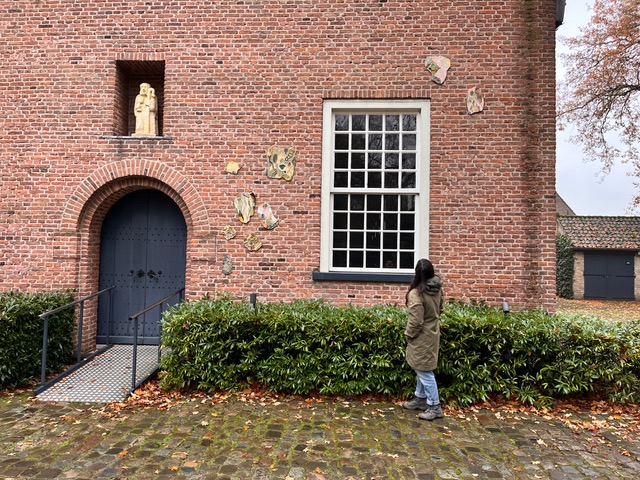Delphine Courtillot (Paris, 1972) studied painting and photography at École Nationale Supérieure des Beaux-arts in Paris.
In 2015 she discovered ceramics and fell in love with the medium’s possibilities and features. Her artistic approach is grounded in an attempt to connect with the very distant past of humanity. The use of ceramic pottery is one of the earliest technological advances, dating back to prehistoric times.
“Through gestures related to sculpting clay, developed over the ages and endlessly repeated by millions of hands, I try to reconnect to ancient forces. This turns sculpting clay into a way to hear the voices of our ancestors.
Drawing from an experience of the landscape linked to a practice of roaming and daydreaming, along with the dizzying realisation of the supremacy of minerals over the fate of the world, I bring together an amalgam of primordial shapes from human and natural history in my works: jars, corals, rocks, sticks, and anthropomorphic amulets unite into a single whole that invites its viewers to draw from their own dream registers, and to explore the possibilities of a consciousness founded on ecology rather than animism, fitting for a modern age, and based on the actual and intimate connection between humankind and nature.”
Delphine is developing an ensemble of glazed ceramic reliefs for the façade of the chapel of Sint Catharinadals convent.
The arrangement of relief tiles in a constellation resembles the seemingly random rhythm of growing moss and the interplay of light in the canopy of the surrounding trees reflecting the façade. But they also evoke the stained-glass windows that are aimed outward, reflecting and absorbing light instead of letting it through.
Each tile has a unique layer of glaze and engobe applied to it, turning them into ceramic “paintings” of a kind. They all come in individual shapes and sizes as well, with some having a specially processed surface that suggests an origin in the natural world of lichens, bark, fungi, crystals …
“With these new works for the façade of the chapel of Sint Catharinadal my aim is to offer a reflection on time: the time of mosses growing as they move, the time of coral growing, the time required to develop a technique, the speed at which potters rotate their clay, and the ‘deep time’ as measured on geological and cosmic scales.”



